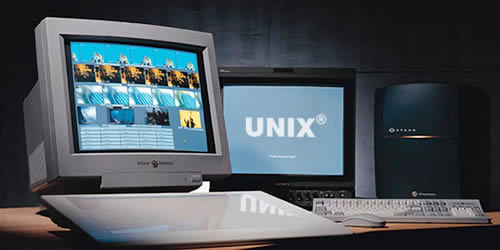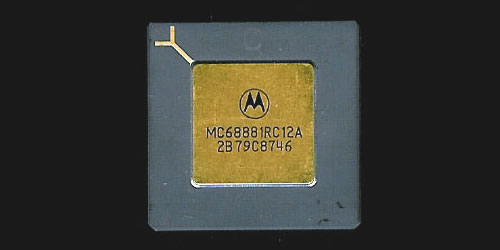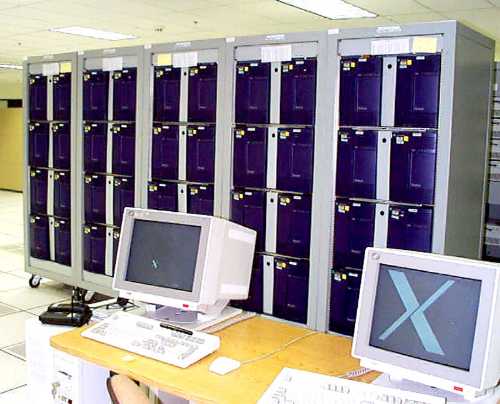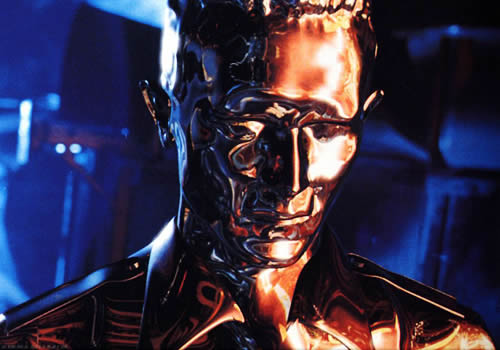Visual computing. Part I

As is often the case in IT, this undertaking has exclusively academic roots. The story began in 1979 at Stanford, where Professor James Clark, along with his students, led the development of the Geometric Engine. The task at that time was absolutely fantastic - to provide workstations with the ability to operate with three-dimensional images.
Looking ahead, I note that now the fruit of its decision is being tasted by users of all modern operating systems known to me for personal computers. So, today I will talk about the era of visual computing at UNIX and the SGI company responsible for its birth and sunset.
Silicon Graphics Inc
The value of the engine was also appreciated by sharks of venture capital, which allocated serious money for the development of Silicon Graphics, Inc., created by the professor in 1981. Clark, together with his assistants and graduate students, leaves the university in his own office and continues his development already under a commercial roof. To implement the concept of the Geometry engine as a commercial product, of course, a hardware component was also required. For reasons known only to the professor and his investors, he did not look for partners among large computer vendors, but decided, along with software, to master the production of computers under his own brand.

Motorola 68K, the first stone in the SGI garden
The earliest SGI iron horse models bore the heart of Motorola's production, the 68k 32-bit CISC processor. It is worth noting that on the personal computers in those days (the beginning of the 80s!) Sixteen-bit stones i8086 from Intel ruled. The superiority was not limited to bit capacity - support for 16 MB of RAM compared to 1 MB for i8086, a progressive architecture that allows more efficient use of memory, as well as execute more instructions per cycle. These factors allowed SGI machines to achieve unprecedented performance with the size of a regular personal. Of course, similar hardware was used in other Unix stations, for example from HP or DEC. And here the decisive factor, which for many years brought Siliconov to the lead in graphic solutions, was software.
Despite the fact that the first IRIS 1000/1200 silicone computers were just graphic terminals for the VAX monster (the mainframe from Digital), the model from the next IRIS 3130 line became an independent and heavily armed Unix station. The armament consisted of two 300 MB hard drives, a tape drive (there were simply no other portable storage facilities) and a ten-megabyte Ethernet network card. Despite this, the power of Motorola stones was not enough, and the market required new, more productive solutions.
MIPS Architecture
At the same time that Professor Clark left his university to implement his ideas in SGI hardware and software, John Hannesy was developing a completely new MIPS RISC processor architecture. Its features were conveyors long at that time with almost complete absence of locks. Despite the fact that the small number of locks in the conveyors did not allow to execute complex instructions, the ability to work at high clock frequencies compensated for this drawback and allowed them to be emulated. After three years, the development has ripened for industrial implementation, and Hennessey also leaves the university for his own brainchild - MIPS Technologies, the company he founded. The original concept of working with memory made it possible to remove most of the load from the CPU to ensure the interaction of peripheral devices with memory - they access it independently, having received a certain segment from the processor. The successful ideology of the MIPS architecture was the best suited for the SGI engineers' ideas, and the question of who would supply the processors for their computers was resolved for many years to come.
The transition to new processors, coupled with the use of its own UNIX SysV dialect as an OS, allowed SGI to compete on equal terms with Sun, the largest player in the UNIX station market, by the mid-80s.

Cluster from Indigo, Fermi National Laboratory, USA
Over the next few years, Silicon Graphics workstations got at their disposal a 64-bit central processor, SCSI interface, 32-bit buses - EISA with software Plug-n-play for connecting internal devices / expansion cards (data transfer rate - 32 Mb / sec) and GIO graphic bus (speed - 133 Mb / sec). System bus throughput reached 400 Mb / s. To consolidate its victorious march, SGI makes a number of acquisitions - in 1989, the processor supplier MIPS Technologies was swallowed with all its guts. Then, silicone workers bought, no less than two, of two of the three manufacturers of professional programs for working with 3D (Alias and Wavefront) available on the market at that time. The third player, Softimage, unexpectedly for everyone a bit later acquired Microsoft.
Meanwhile, amid a general upsurge, the company is leaving its founder, James Clark. For the same reasons that Steve Jobs was prompted to take a similar step in due time - the lack of mutual understanding with the environment in leading circles. Just like Jobs, who opened NeXT, Clark did not sit back - he founded a startup called Netscape.
Who ordered the music?

T1000, a liquid metal robot. Entirely created in IRIX
Movie "Terminator 2"
By the beginning of the last decade of the twentieth century, the hegemony of SGI in the professional graphics station market had become apparent. SGI models from Iris 4D to SGI Indy have become the standard in the industry for the production of special effects for films and the visualization of various natural processes. The animals of Jurassic Park, a liquid metal robot and everything else in Terminator 2, special effects for the Abyss and many other films from the mid-eighties to the mid-nineties were created on these machines. Later films - “Armageddon” and “The Lord of the Rings” also flaunted special effects created using SGI stations (these were already heavier rendering solutions). Despite the fact that the computers of this office are known to the masses due to their use in cinema and television broadcasting, these industries were far from the only areas of their application.
The concept of "Visual Computing" perfectly fit medicine, microbiology, design, geology and military affairs. Where visualization of real-time processes was required, there were no competitors to SGI solutions. The systems were also very successful among designers due to the presence of CAD- / CAM-applications on this platform. Bourgeois pilots are familiar with simulators comparable in realism to real airplanes, and the merit of this, as you might guess, is in SGI visualization systems. It is possible that similar simulators are also used in the training of civil aviation pilots in Russia, but the facts of installing such systems are not known to me.

"Hryun and Stepan" was also made in Unix
In Russia, Unix together with computers of cheerful blue, green and violet colors were used, first of all, by animators and video production studios. Of the known, I would like to note the recognized domestic grandees of Pilot TV and BS Graphics . In the times preceding the 1998 crisis, silicone stations were readily acquired by oilmen and meteorologists, but due to the high cost of both the computers themselves and the software, they did not get wide distribution with us.
